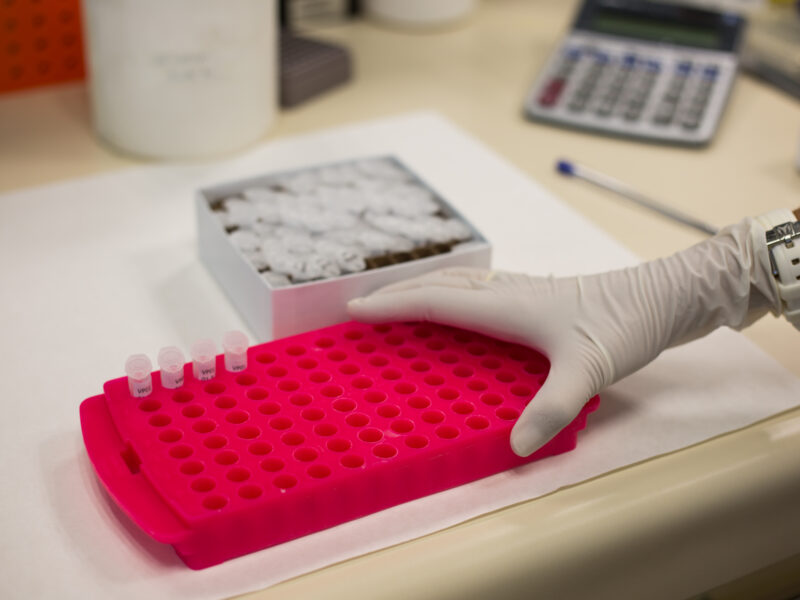El virus muta para adquirir ventajas evolutivas que pueden comprometer los avances científicos en el campo de la COVID-19. Es por ello que IrsiCaixa incrementa los esfuerzos de secuenciación, una herramienta que permitirá controlar mejor la epidemia, hacer un seguimiento de las variantes y detectar la aparición de nuevas mutaciones.
Gracias a las técnicas de secuenciación, IrsiCaixa ha demostrado que un total de 11 muestras, provenientes de pacientes de la comarca del Bages y con sospecha previa de haber adquirido la cepa británica del SARS-CoV-2, pertenecen a esta nueva variante. Se implementa el Campus Can Ruti sequencing hub, formado por IrsiCaixa, los servicios de Microbiología y Enfermedades Infecciosas del Hospital Germans Trias i Pujol y el servicio de Genómica Translacional del IGTP, que pretende secuenciar 200 muestras de pacientes con COVID-19 a la semana.
IrsiCaixa publica en abierto los resultados de un estudio en el que evalúan 72 fármacos y confirman que de entre ellos la Aplidina es el más potente bloqueando el virus, incluso en comparación con el Remdesivir, el fármaco más ampliamente usado en la clínica actualmente.
Publicación en la revista Med de los resultados del seguimiento de la respuesta inmunitaria de pacientes que han pasado la COVID-19 durante 6 meses.
La cohorte King llega a los 400 pacientes reclutados y detecta el segundo caso de reinfección por SARS-CoV-2 que desarrolla una clínica grave.
Los participantes de la cohorte CoronAvi@s reciben las vacunas aprobadas por la Unión Europea y se empieza el estudio de su respuesta inmunitaria frente a las vacunas. De este modo podremos entender la capacidad de respuesta de este colectivo, que, debido a la edad, suele tener menor capacidad de responder adecuadamente a las vacunas, y así poder buscar soluciones para mejorar su protección frente al virus.
Se empieza el estudio de la variante británica del virus en el laboratorio mediante pseudovirus, virus artificiales que contienen las mismas mutaciones que la variante del SARS-CoV-2 circulante. El objetivo es evaluar la eficacia de los anticuerpos naturales o producidos por vacunas frente a esta variante.
Se testan en el laboratorio los anticuerpos sintéticos biespecíficos de tercera generación, unos anticuerpos artificiales que podrían unirse al virus e impedir su entrada en las células. Estas moléculas muestran una capacidad para bloquear el SARS-CoV-2 cien veces mayor que las diseñadas en la primera generación.
Inicio del ensayo clínico para determinar la eficacia del CPC, componente químico presente en los colutorios para reducir la capacidad de transmisión del virus en pacientes.
Publicación del estudio sobre el riesgo de transmisión según la carga viral de pacientes con COVID-19 en Catalunya. A mayor carga viral mayor es el riesgo de contagiar y también de progresar clínicamente.
Estudiamos la especificidad y sensibilidad de los tests rápidos de antígeno por coronavirus de cinco marcas diferentes en comparación con la técnica de referencia PCR y confirmamos su utilidad como herramienta de cribaje masivo.


